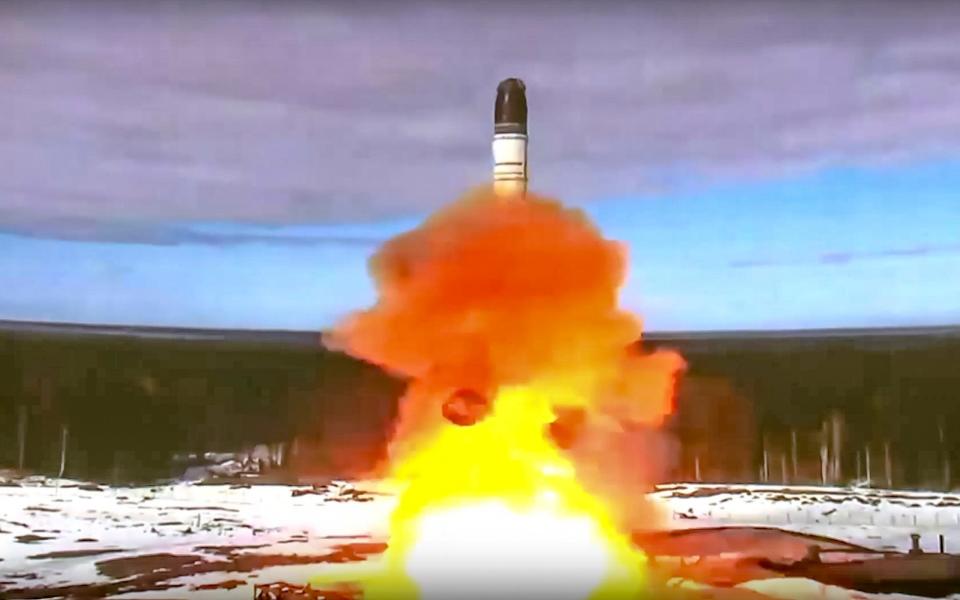World
‘World’s deadliest weapon’ explodes during testing in Russia

A Russian missile touted as the “world’s deadliest weapon” failed to launch for the fourth time on Saturday, exploding as it was being refuelled at the Plesetsk Cosmodrome 500 miles north of Moscow.
Satellite images showed that the nuclear-capable Sarmat RS-28 missile, nicknamed “Satan-2”, left a crater on the launchpad, with damage visible to surrounding roads and buildings.
“The missile detonated in the silo, leaving a massive crater and destroying the test site,” said MeNMyRC, an open-source investigation project.
Four fire engines photographed at the test site had been “responding to a forest fire” that was probably linked to the failed launch, the project added.
“The Sarmat is a liquid-fuelled missile so this accident could have occurred separate from the actual launch activity,” it said.

The failed launch happened a week after a member of Vladimir Putin’s security council warned that a Sarmat missile could strike the European Parliament in Strasbourg in under four minutes.
“For your information, the flight time of the Sarmat missile to Strasbourg is three minutes 20 seconds,” Vyacheslav Volodin said in response to an EU vote that recommended allowing Ukraine to strike Russia with Western missiles.
The Kremlin has declined to comment on the incident but Pavel Podvig, a senior researcher at the United Nations Institute for Disarmament Studies, agreed that a Sarmat missile had exploded before a test launch.
“Looks like the Sarmat test was not quite successful, to put it mildly. It’s a big crater,” Mr Podvig said.


The Sarmat is known to have had only one successful launch, in April 2022.
The Kremlin has promoted the Sarmat programme as its core nuclear missile, producing slick videos using computer-generated graphics showing it delivering death to hundreds of thousands of people on the other side of the world within minutes of being launched.
Vladimir Putin unveiled the missile in 2018 as a replacement for the smaller original “Satan”. It was intended to support his promise of nuclear war if his “red lines” were crossed, although analysts have said that these threats appear increasingly empty.
“This is a sign that Russian manufacturing is seriously degrading,” said Carl Bildt, a former Swedish prime minister and now co-chairman of the European Council on Foreign Relations think tank.
Designed as a “heavy” intercontinental missile, the Sarmat has a range of 11,100 miles and can carry up to 16 nuclear warheads.










